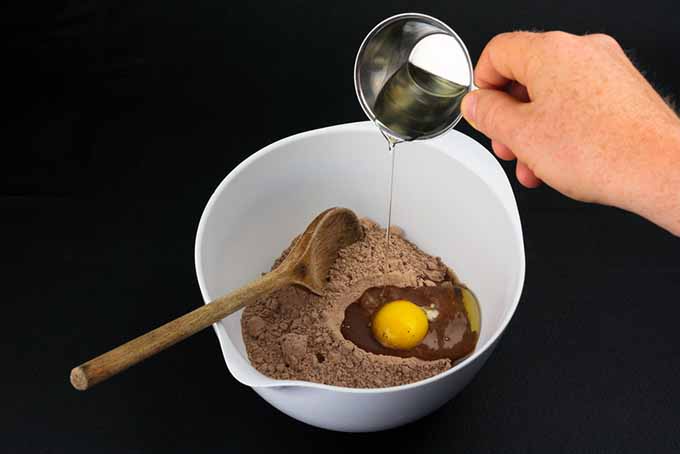When it comes to frying food, using the right oil can make all the difference. While most people might opt for a single type of oil to fry their meals, some may wonder whether mixing different oils is a good idea. In this article, we will explore various aspects about combining oils for frying – from food safety and health benefits, to potential risks involved in the process.
Understanding Oil Smoke Points
Before discussing oil mixtures, it is important to note that smoke points should be taken into account when choosing an oil for frying. Smoke point refers to the temperature at which an oil starts smoking and breaking down into harmful components. Using an oil beyond its smoke point can result in damaging food quality and releasing toxic fumes that can cause respiratory issues.
Most commonly used oils for deep-frying have high smoke points that allow for crispy food without burning or producing harmful byproducts. These include canola, vegetable, corn and peanut oils. On the other hand, more delicate oils, such as flaxseed and extra-virgin olive oil, are better suited for low-heat cooking methods like sautéing.
To give you an idea about the variations in terms of smoke points between different oils, here’s a table:
| Oil | Smoke Point (°F) |
|---|---|
| Avocado | 520 |
| Canola | 400-450 |
| Coconut | 350-450 |
| Corn | 450-470 |
| Olive (refined) | 390-410 |
| Peanut | 450-500 |
| Sesame (unrefined) | 350-410 |
| Sunflower (high oleic) | 440-450 |
As you can see from above table, it’s essential to choose an appropriate oil with a high enough smoke point when deep-frying food at high temperatures.
What Happens When You Mix Oils?
When it comes to mixing oils, the chemical reactions that occur between two or more oils can depend on factors such as heat and acidity. For example, you might mix a neutral tasting oil with an oil that has a prominent flavor, such as sesame oil. In this case, the final product would have a nutty taste without being overpowering.
However, while mixing oils can provide new flavors and health benefits due to each oil’s unique vitamin and nutrient concentrations, there are also potential risks associated with mixing. The varying smoke points of different oils means there is potential for these mixes to break down more quickly or reach their smoke point more rapidly than may be expected when used alone. This could lead to unforeseen consequences like toxic fumes or burning food.
Benefits of Mixing Oils for Frying
Despite the aforementioned risks, some argue that mixing oils together can offer several advantages in frying food. One significant reason being that it enhances flavor profiles; using more than one type of oil gives users the flexibility to create custom blended flavors that complement specific dishes. Moreover, combining certain types of oils can be beneficial for health reasons – for instance, blending seed-based oils like safflower and sunflower with flaxseed oil increases Omega-3 levels in meals.
Another major advantage of combining oils is that it helps boost overall smoking point temperature by raising what’s called ‘smoke point by blending average’ . For instance: If two different smoking point oils are mixed together at equal proportions (let’s say one has a smoke point of 400 ºF while the other smoke point is 450 ºF), the resulting blend will have an average smoke point around 425 °F – which makes it ideal for deep-frying foods!
Additionally, many people prefer using mixed-oil combinations over single types because they believe it produces better end results for their meal. For instance, if you mix peanut oil and sesame oil together while frying chicken wings, you would end up with a much crispier skin compared to only using one type of oil.
Risks Involved in Mixing Oils for Frying
Unfortunately, as beneficial as mixing oils might seem, there are also some risks involved that must be taken into consideration. One potential issue is that blending two oils with different smoke points may result in an average smoke point that’s lower than expected. This means it could break down more quickly or produce toxic fumes when heated at higher temperatures than what the user intended – leading to undesired consequences.
Another thing to note is that not all oils are considered safe for consumption in large amounts – by adding significant quantities of these oils to a mixture could make them harmful for health. For instance: coconut oil is highly saturated and should be used in moderation to avoid raising cholesterol levels and other health issues.
It is important to ensure the selection of measured oils combined constitutes a safe quantity for ideal cooking purposes so as not to outweigh risks over the benefits.
Best Practices for Mixing Oils
If you do decide that using a mixed-oil combination suits your needs better than using single type of oil, here are some things to keep in mind:
- Choose high-quality oils: choosing good quality oils ensures appropriateness both from taste and safety aspects.
- Consider smoke points: Use our table above as reference; remember blends will take on the characteristics of each individual ingredient
- Ratio considerations: depending on various factors like temperature, cooking time etc., consider adjusting the proportions accordingly.
- Experimentation: Try different combinations until finding what works best for your dish.
- Store properly: store your mixed oils away from direct light/sunlight, humidity and high temperature environments.
Expert Recommendations
With different opinions surfacing regarding this topic; we sought recommendations from experts within nutrition or culinary fields.
American Heart Association suggests blending high-oleic oil (e.g. sunflower) with other oils like olive, avocado, or coconut which can act to reduce LDL cholesterol and give users additional health benefits.
Chef Justin Klose of Milwaukee-based Red Light Ramen offered his thoughts on the concept of mixed oil deep-frying: “I think mixing oils is good when trying to balance smoke points or flavors. For instance, I often blend refined peanut oil with sesame oil for certain dishes to produce that signature crunchiness while keeping flavors intact.”
Conclusion
In conclusion, blending different types of oils together can offer several unique advantages when frying food – including enhanced flavor profiles and added health benefits. However, it’s important to keep in mind potential risks involved such as smoke point level reductions or the use of ingredients that shouldn’t be taken in large quantities.
Ultimately, deciding whether or not a mixed-oil combination is going to suit one’s preference based on individual requirements and taste preferences should be made cautiously with careful consideration for various elements from safety, quality and effectiveness perspectives in order to minimize potential adverse consequences..
Q&A
- Q: Is it safe to mix different oils for frying? A: It is generally safe to mix different oils for frying, as long as the oils you are using have similar smoke points and flavor profiles.
- Q: What are some examples of oils that can be mixed together for frying? A: Some examples of oils that can be mixed together for frying include peanut oil, sunflower oil, vegetable oil, and canola oil.
- Q: Will mixing different oils affect the taste of the food being fried? A: Depending on the combination of oils used, mixing different oils may slightly affect the taste of the food being fried. However, this effect should be minimal if you choose compatible oil varieties.
- Q: Can I mix olive oil and coconut oil for frying? A: Olive oil and coconut oil have very different smoke points and flavors, making them incompatible as a mixture for frying. It is recommended to stick to using one type of oil when frying rather than combining two or more incompatible types.





